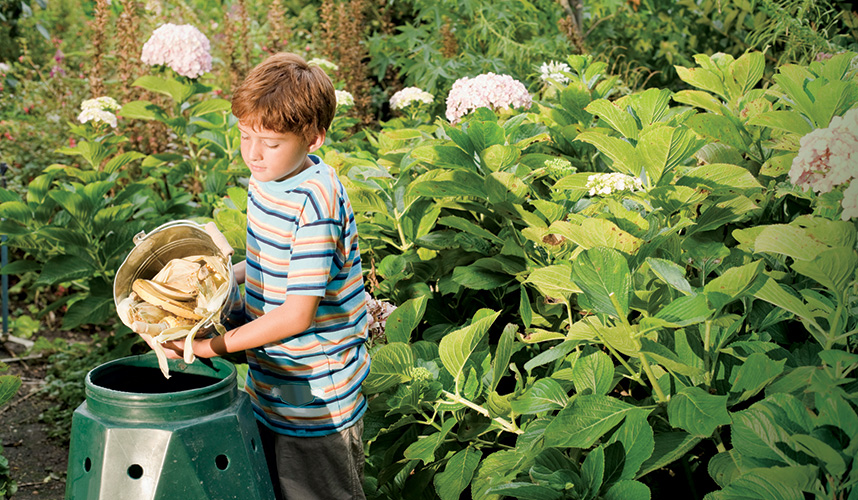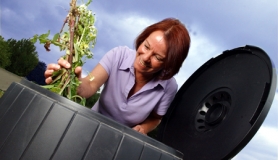How long does it take to make compost? The answer to this question ranges widely, depending on the process used, the compost ingredients, and how the system is managed. Perhaps most importantly, it depends on the intended use of the compost: many ingredients can be used as a mulch immediately, while it may take many months to achieve the stability required for germination of sensitive seedlings. A worm bin requires three to six months to turn food scraps to compost, and an unmanaged leaf pile may take more than a year to break down.
How can you tell when compost is finished? Finished compost will no longer heat up, even after mixing. The initial ingredients are no longer recognizable, and what is left is an earthy smelling substance similar to a rich organic soil.
Is newspaper safe to compost? Are the inks toxic? Newspaper is safe to compost, but it breaks down quite slowly because of its high lignin content. (Lignin is a substance found in the woody cell walls of plants, and it is highly resistant to decomposition). Most newspapers today use water or soy-based inks. Although these may contain small amounts of toxic compounds, the trace levels are not of significant toxicological concern.
How do you keep rats away? The best way to keep rodents and other animal pests from becoming a problem is to avoid creating conditions that will attract them. If you add meat or dairy products, or leave cooked foods such as pizza crusts lying around, you will be inviting rodents to a feast. On the other hand, if you stick to composting vegetation such as leaves and grass clippings, you will minimize your chance of hosting rodents. Adding fruit and vegetable scraps is safe as long as they are buried in the other compost ingredients and the system heats up so that the food wastes are quickly broken down.
Which kinds of pet wastes can safely be composted? Guinea pig, rabbit, hamster or gerbil waste can be safely composted, along with the wood or paper shavings used in their cages. Droppings from dogs or cats should be avoided, though, because they may contain parasites or disease organisms harmful to humans.
Can compost harm plants? In general, compost is good for plants - it helps build soil structure, retains moisture, increases soil organic matter, and provides a slow release of nutrients important for plant growth. If you use compost that has not adequately matured, however, it may cause chemical burns on plants or compete with them for use of soil nitrogen.
What about flies? Fruit flies or house flies can become a problem for indoor composters unless preventative steps are taken. If food scraps are composted, they should not be left exposed to the air. Instead, they should be covered by a layer of brown material such as soil, old compost, leaves, or wood shavings. In worm bins, food scraps should be buried in the bedding rather than placed on the surface.
“Did You Know... ...every grain of healthy soil capable of growing food has gone through a worm’s gut. Human’s very existence relies on worms doing their job in the soil.”
WHAT TO COMPOST:
‘Greens’ or nitrogen rich ingredients: Urine (diluted with water 20:1), comfrey leaves, nettles and grass cuttings
Other green materials: Raw vegetable peelings from your kitchen, tea bags and leaves, coffee grounds, young green weed growth (avoid weeds with seeds), soft green prunings, animal manure from herbivores eg cows and horses, poultry manure and bedding
Browns or carbon rich ingredients: Cardboard eg. cereal packets and egg boxes, waste paper and junk mail, including shredded confidential waste, cardboard tubes, magazines - although it is better for the environment to pass them on to your local doctors or dentists’ surgery or send them for recycling, newspaper, bedding from vegetarian pets eg rabbits, guinea pigs, hay, straw, shredded paper, wood shavings, tough hedge clippings, woody prunings, old bedding plants, bracken, fallen leaves (the best use though is to make leafmould)
Other compostable items: Wood ash, in moderation, hair, nail clippings, egg shells (crushed), natural fibres eg. 100% wool or cotton.







